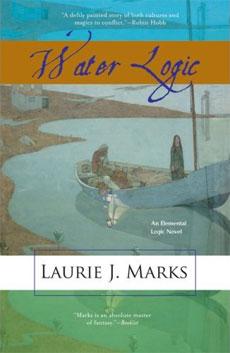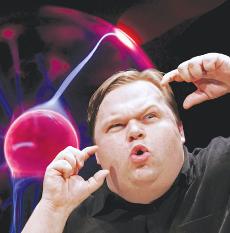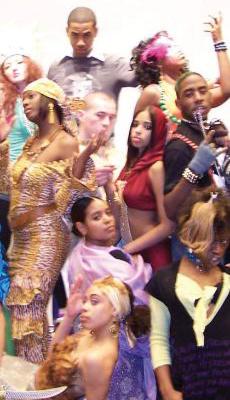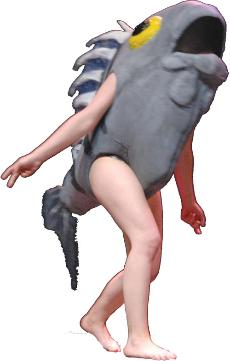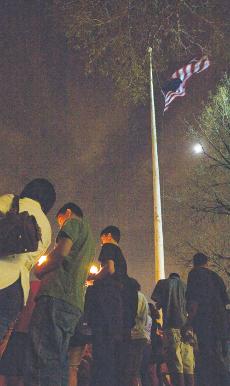Monkey To Man
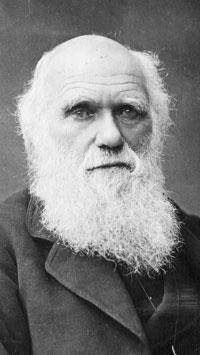
March 12, 2007
Before Gutenberg, words were written by hand. Before Magellan, the world was flat. Before Darwin, there was Creation. Throughout history certain men have changed the world around them dramatically. Certain men have shocked and awed an entire planet full of people. Charles Darwin was one of those men. Darwin is the man behind evolution, a man who made a world full of complexities begin to make sense. The Museum of Science is featuring Darwin, a traveling exhibition organized by the American Museum of Natural History, New York. It is an intimate journey through the world and mind of one of history’s most revolutionary individuals.
The exhibit begins with The World Before Darwin. In an antique display case, skeletons of animals are found, the same kinds of skeletons that scientists of the time credited to the work of a heavenly being. Before Charles Darwin came along it was commonly thought that each species was unique and was created by a divine power independent from any others. Birds were birds and they were made that way by God, monkeys were monkeys, and so on and so forth.
Next the exhibit moves onto the Young Naturalist section. Here visitors learn of Darwin’s life before he set out on the trip that would change the world. You find a recreation of Hutton’s Unconformity, a layered rock outcropping in Scotland that geologists of the time used to illustrate the earth’s long history. The deep detailed layers in the rock showed the many changes the earth had made through the years and how they had shaped the land. Also here, is the geologic hammer that Darwin himself used while studying the world around him.
The next section of the exhibit, A Trip Around the World, is the most detailed and most dramatic section of the exhibit. Understandably so, as the 1831-1836 journey aboard the HMS Beagle was the most life altering event of Darwin’s career. Visitors will find the letter that Darwin received from his mentor, J. S. Henslow, inviting him to serve as naturalist aboard the Beagle. Upon accepting the invitation Darwin set off on a five year expedition that would open his eyes and plant the spark that would one day lead to the solidification of his revolutionary theories.
In this section visitors encounter a model of the Beagle and can see the cramped confines of the boat that would be his portal to knowledge. Also here, is the bible and pistol that he brought with him on the trip. The Beagle reached the Galapagos Islands, off the Western coast of South America, where his ideas came to life in vivid detail. On different islands in the same chain Darwin found differences in the same species. On one island, tortoises had ridges in their shells that allowed them to raise their heads and reach higher plants, while on another island the tortoises had no ridges, as they ate plants that were on the ground and didn’t have any need to raise their heads. The differences were also apparent in the iguanas that inhabited the Galapagos. On most islands the iguanas were like those found on the mainland in that they lived on the land, but on one particular island the iguanas spent much of their life in the ocean. This is the only place in the world that these marine iguanas can be found.
Also in this section visitors will find live specimens of the type of green land iguana Darwin would have seen as well as horned toads. There are also two lumbering tortoises like the ones that Darwin entertained himself by riding while exploring life on the islands. Models of other animals like rheas, sloth, and armadillos illustrate the vast array of life he was observing. These animals and their complex differences led Darwin to come up with the idea of natural selection. Basically, the idea is that species adapt to their environments and pass on those adaptations to their offspring. Over time those beneficial adaptations manifested themselves in physical changes to the species, much like the ridges in the shells of the tortoises who ate higher placed plants. Visitors will also find actual specimens of butterflies, beetles, and fossils that Darwin himself collected. This is the section of the exhibit where visitors join Darwin on his journey and see the same natural wonders that he did. These types of things are understood in today’s world, they are a given. But in Darwin’s time they were wonders to behold as well as confirmation of his controversial ideas.
Upon his return to London Darwin began to document those theories that had been sparked by his voyage. In the next section of the exhibit, The Idea Takes Shape, visitors explore his life at home. There are notebooks and letters documenting the development and perfection of his theories, as well as examples of key fossils that helped to prove the theories. This section also reveals the other side of Darwin’s life, the personal side. After all, he was not just a scientist but a human being. Here the visitors see the humane side through his love letters with Emma Wedgewood, his first cousin whom he married in 1839. We also find personal notes that show Darwin debating whether or not to marry. It is in this section that we find Darwin the man, a man who struggled with the importance of his personal life as compared to his professional life.
The next section, A Life’s Work, features a recreation of Darwin’s study at Down House where he continued his experimentation with pigeons and plants in order to perfect his theory of evolution that, in 1859, he presented to the world in his book The Origin of the Species. The book and the theories enclosed within it shocked the world; a world rooted deeply in religion; a world where the story of Adam and Eve in the Garden of Eden was taken as absolute fact by the vast majority of people. There is an original page of the manuscript, one of only 28 existing in the world. In this section there are some of Darwin’s more personal items including a writing box filled with things collected by his wife to help remember their daughter, Annie, who died at 10 years old. On the grounds of Down House, Darwin created the “Sandwalk”, a sand path that he would stroll along observing the natural world around him and thinking many times a day. Through a video in this section created from 100 photographs, visitors join Darwin on a “walk” down this path.
The exhibit ends with Evolution, Today, a look at the steps science has taken beyond Darwin’s theories and the controversy that still surrounds those theories to this day. Though not entirely perfect, Darwin’s theory is the foundation of all that we understand today through modern biology. Here we see how recent discoveries in molecular biology and genetics enhance and clarify Darwin’s 150- year-old theories. Also in this section, the debate between evolutionists and creationists that still rages today is illustrated by the addition of biology textbooks with warning labels alerting the reader to the fact that the Theory of Evolution is discussed within its pages. The exhibit ends with a quote from Darwin displayed on the wall, the quote reads “There is a grandeur in this view of life … from so simple a beginning, endless forms most beautiful and most wonderful have been, and are being, evolved.” This is the idea that drove Darwin to his revolutionary conclusions. It was the grandeur of the natural world and the ways that simplicity and complexity go hand in hand to create the world in which we live that pushed Darwin to change that world.
Though the exhibit is the draw, there are more ways to explore the impact of Darwin’s theories throughout the museum. In a number of exhibits in the museum’s permanent collection connections to Darwin can be found. In the Discovery Center and Natural Mysteries visitors become Darwin themselves and take on the role of a curious naturalist. In the Discovery Center visitors examine specimens of insects, amphibians, fossils, and rocks with magnifying glasses much like Darwin did as a child himself. In Natural Mysteries visitors are given examples of thousands of different species, many of which Darwin himself would have studied himself. The Butterfly Garden is where visitors witness the intimate relationship between animals, butterflies, and plants, flowers. Both plants and animals evolve together with animals adapting to the changing plants in order to sustain life. In the exhibit The Human Body Connection Darwin’s theories are married with modern genetics and primatology, exploring the origins and evolution of human kind.
The Museum of Science is located at Science Park in Cambridge, on the green line stop between North Station and Lechmere. The museum is open seven days a week from 9-5, exhibits hall hours are extended to 9 on Friday nights. Discount tickets for $3 can be purchased in the Student Life office in the Campus Center. So, head down to the Museum of Science and check out Darwin, learn about the man behind the idea.





















































